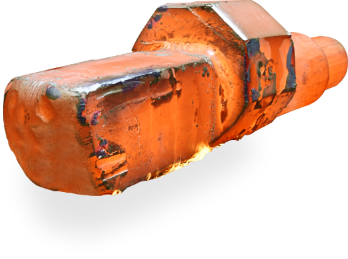
ENERGY STORAGE COMPONENT FORGINGS
.jpg)
Energy Storage - Forging The Future
Are you at the forefront of electric energy storage development? As this industry is poised to become an essential element of the electricity infrastructure of the future, we are here to help. Acting as an extension of your team, our metallurgists are well versed in material development, our forge engineers have decades of experience making the impossible possible, and our sales team is your advocate for getting parts on time, as promised.
Whether you're working on one-off projects for energy storage R&D - including material design - or looking to get ahead by scheduling out your repeat components, you can rely on Scot Forge.
We want to be more than just a manufacturer meeting your needs. We want to be a partner in getting our world to net-zero emissions by helping you discover opportunities and overcome challenges that energy storage presents, which according to Sandia National Laboratories, include:
Offsetting the need for additional peaking generation capacity and reducing equipment wear, fuel use and air emissions.
Addressing growing electric service power quality and electric service reliability challenges, possibly by enabling utilities to provide differentiated electric service with higher quality and/or reliability.

Forging for Energy Storage Including:
Pumped Hydroelectric Energy Storage.
A popular form of energy storage, pumped-storage hydroelectricity is typically designed to store excess power from the grid. Using the excess electricity to pump water up to a reservoir can be stored then released when demand rises. Similar to hydropower, once released, the water flows down through a turbine to generate electricity. The turbine/generator is similar to typical hydroelectric power plants that do not incorporate storage.
Compressed Air Energy Storage.
Compressed air energy storage (CAES) involves using excess energy to compress air at up to 1,000 pounds per square inch, creating a high-pressure system in a series of large underground chambers. This energy storage method is coupled with wind energy. When the wind speeds slow or power demand surges, the pressurized air energy, typically mixed with a bit of natural gas, is released to spin turbines turning generators to create electricity.
Flywheel Energy Storage.
Flywheel electric energy storage systems include a shaft connected to a cylinder that spins rapidly within a vacuum-sealed enclosure attaining rotational speeds up to 60,000 revolutions per minute. Some flywheels use magnetic bearings to levitate the cylinder, thus limiting friction-related losses and wear. Excess electricity is used to accelerate a flywheel (a type of rotor) through which kinetic rotational energy is stored. When the electricity is needed, the stored energy is converted via slowing the flywheel's rotational speed through a shaft that turns a generator.
Thermal Energy Storage.
Electricity can be used to produce thermal energy. According to the International Renewable Energy Agency, "coupling heating systems with thermal and seasonal storage offers important flexibility in demand in regions where winters are particularly harsh. For example, the Drake Landing Solar Community in Canada uses a long-term thermal energy storage system to store heat from solar collectors during summer for space heating during winter. In coupling the power and thermal sector, Siemens-Gamesa is testing a thermal energy storage system that uses wind power to produce heat stored in over 1,000 tons of rock. This system provides a thermal storage capacity of 130 megawatt-hours of electric energy at rated charging temperatures of 750°C. IRENA estimates that around 234-gigawatt hours of thermal energy storage are present, a crucial enabler of reliable, secure and flexible energy systems."
Superconducting Magnetic Energy Storage.
A superconducting magnetic energy storage system (SMES ) stores electricity as a magnetic field in an environment cooled below the temperature needed for superconductivity. As long as this temperature is maintained, energy can be stored indefinitely because the current will not degrade. Additional SMES components include power conditioning equipment and a cryogenically cooled refrigeration system.
Methane.
Researchers have developed a way to take the products of biomass gasification to produce methane, which is then be burned to power turbines. Methane essentially serves as an energy storage medium and can be stored or easily piped/shipped using the existing natural gas infrastructure.

Scot Forge Difference
At Scot Forge, we know the importance of getting your parts on-time, as expected. However, for customers new to procuring forgings, ordering a forging that will meet all specifications for end-use applications may be a challenge, which is why finding a trusted supplier and partner is essential. Our employee-owners are here to ensure your project stays on track with our forgings by offering:
We offer many size forgings in both standard and unique geometries to meet your needs.
Semi-Closed Die
Discs & Blanks
Pro Tip - Did you know near-net shapes can save you time and money? Oftentimes, a customer calls to order a disc, which they will later machine down to a more shaped part. By working with our technically trained sales team, you can get your finished product shape as close as possible to optimize your production process.





